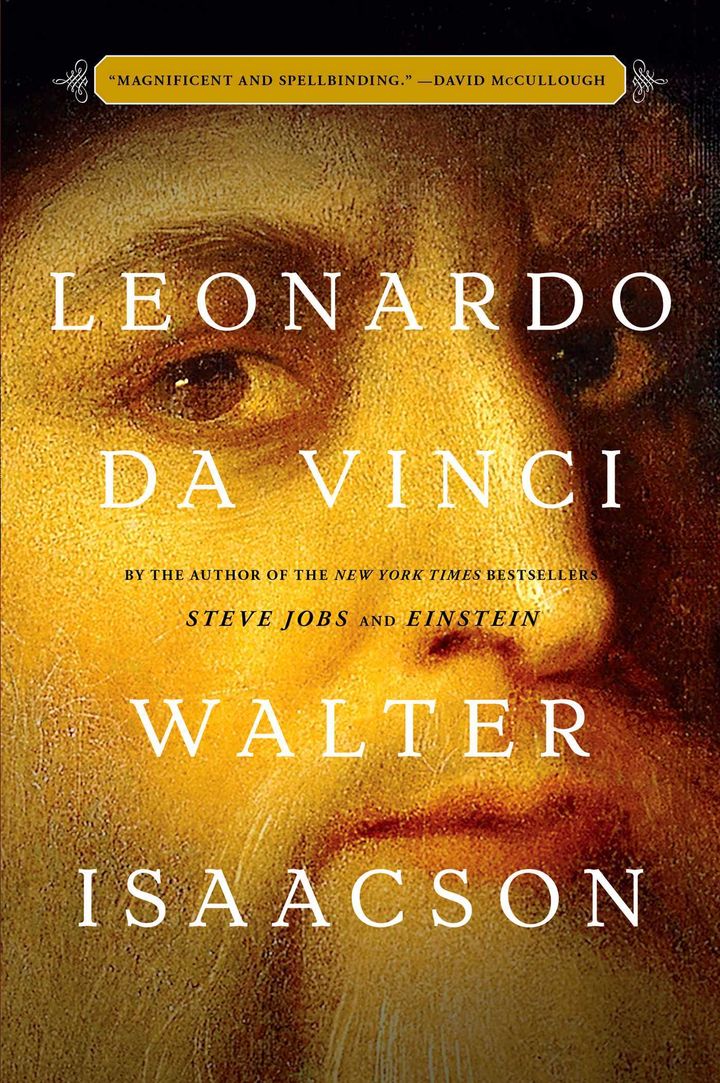Walter Isaacson is a prolific biographer of forward thinkers like Ben Franklin, Albert Einstein and Steve Jobs, all men who changed history in their own time. His latest is an incisive portrait of Leonardo da Vinci, perhaps the prototype Renaissance man for all seasons. The towering artist and inventor, da Vinci conceived things on paper, that became part of our reality when technology caught up with his designs. His scientific, engineering, architectural acumen unprecedented, and his scientific curiosity forging a prescient understanding of the natural world. Meanwhile, Leonardo changed a the art of art for millennia.

It may have been a Renaissance, but it was the hard realities of commerce, power and money that drove the arts and sciences, if not humanitarianism. Da Vinci was the illegitimate son of a famed Florentine notary, and had limited formal education at an ‘abacus’ school as he grew up on a farm with his mother and step-father. However, humble his beginnings, Leonardo quickly overcame them in ways the establishment and world at large couldn’t even conceive.
In pursuing his art, Da Vinci was a self-taught anatomist, theater artist, musician, draughtsman, architect and civil engineer, as well as one of the most celebrated (and commissioned) artist in his time.
And he also might have been arguably the most famous out gay man of his century. For GLBTQ readers Isaacson admirably delves into da Vinci’s gay identity, but his total self-acceptance. Leonardo’s personal life illustrates how casual he was about sexual mores of the time. Even though sex between two men was criminalized, there was a level of cultural acceptance. As a young man Leonardo was brought up on ‘sodomy’ charges twice, and both cases were dismissed because in a member of the politically powerful di Medici family was also involved with the same male prostitute.
Leonardo’s longest relationship that is sketched out in his papers is Salai, who came to live on his estate and become an apprentice at age ten. Isaacson reports that probably became a relationship when his was around 15. Leonardo even taking him along for social occasions, his star power vanquishing any prying eyes or public scandal.
Da Vinci was apparently just fine with being public about his relationships with other men. Isaacson quotes Leonardo’s private papers and extensive diaries/sketchbooks where the artist routinely scribbled to- do lists about such preoccupations as mathematic calculations, birds, flying machines, sketches of his “young devilish boyfriend” theater props…weapons of war and even the advantage of going to the baths on Saturday where “you can see a lot of naked men.”
Da Vinci permanently advanced the concepts of three-dimensional perspectives on a two dimensional surface. His understanding of human and animal anatomy and how living creatures moved was singular. In pursuing his art, he became anatomist, scientist, inventor, mathematician, theater artist, musician and famous commercial artist. He was sought after by kings and military men as a design engineer for weapons of war, none of which were actually made- a huge crossbow, man-manual tanks, castle battlement that had portal spikes to knock down ladders, scythed chariots that would cut down men in its path. One devise did that Leonardo invented did make it to the battlefield, a stone and metal devise that would trigger a spark that would ignite gunpowder.
His celebrity didn’t mar his egalitarian persona, welcomed at the courts of kings and estates of aristocrats, he was also a man of the people and the lively arts, part of the theater community, and he even choreographed entertainments. All areas of study as it might apply to his own artwork.
The new forensic analysis to authenticate paintings are explored and Isaacson is able to cite the data regarding da Vinci’s work. Much of the mystery can be attributed to the fact that he had students and assistance that filled in the master’s all but finished work (mostly religious commissions) as he was constantly in demand or distracted by other creative work. Da Vinci’s paintings are still the hottest of commodities. His portrait of Jesus ‘Salvador Mudi’ sold at Christie’s for a reported $450m. even as its authenticity has be questioned. Isaacson for all intents, solves any lingering mystery.
In a chapter about competing commissions between a 50-year-old da Vinci and the 26-year-old Michelangelo. Da Vinci is depicted as being very comfortable with his sexuality, whereas Michelangelo was celibate, but channeling his interest in men in his art work. Michelangelo, the ascetic was openly critical of da Vinci’s work and fame. When they were both commissioned to paint murals at the Palazzo della Signoria (Palazzo Vecchio) in Florence as Isaacson recounts, it turns into an artist challenge. Da Vinci was particularly critical of Michelangelo’s painting and seemingly jealous of his work as a sculptor. This is a fascinating episode in art history and mutual professional jealousy.
Isaacson can be wonky about, for instance, math and engineering that so obsessed da Vinci and some of those passages are a bit heavy goings. But, for all intents this is a dimensional portrait of a genius and the magical world he himself created.
Simon & Schuster has produced a handsome volume for this biography, the plate transfers of da Vinci’s paintings first-rate, as are the illustrations and sketches that include many version of the artist’s most famous works Mona Lisa, Virtuvian Man and The Last Supper. For anyone interested in arts and sciences, Isaacson portrait of Leonardo is a substantive prose feast.
